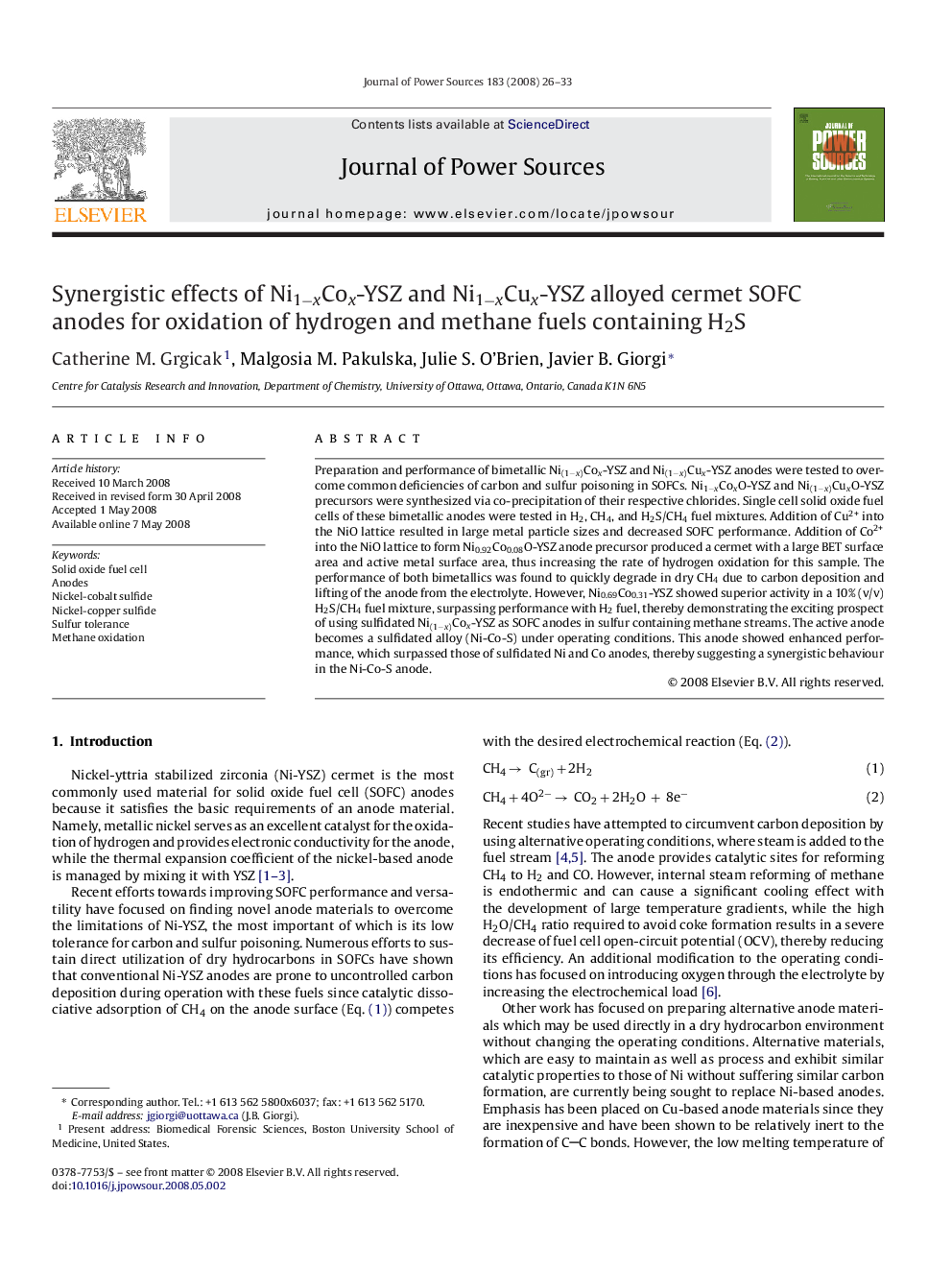| Article ID | Journal | Published Year | Pages | File Type |
|---|---|---|---|---|
| 1285376 | Journal of Power Sources | 2008 | 8 Pages |
Preparation and performance of bimetallic Ni(1−x)Cox-YSZ and Ni(1−x)Cux-YSZ anodes were tested to overcome common deficiencies of carbon and sulfur poisoning in SOFCs. Ni1−xCoxO-YSZ and Ni(1−x)CuxO-YSZ precursors were synthesized via co-precipitation of their respective chlorides. Single cell solid oxide fuel cells of these bimetallic anodes were tested in H2, CH4, and H2S/CH4 fuel mixtures. Addition of Cu2+ into the NiO lattice resulted in large metal particle sizes and decreased SOFC performance. Addition of Co2+ into the NiO lattice to form Ni0.92Co0.08O-YSZ anode precursor produced a cermet with a large BET surface area and active metal surface area, thus increasing the rate of hydrogen oxidation for this sample. The performance of both bimetallics was found to quickly degrade in dry CH4 due to carbon deposition and lifting of the anode from the electrolyte. However, Ni0.69Co0.31-YSZ showed superior activity in a 10% (v/v) H2S/CH4 fuel mixture, surpassing performance with H2 fuel, thereby demonstrating the exciting prospect of using sulfidated Ni(1−x)Cox-YSZ as SOFC anodes in sulfur containing methane streams. The active anode becomes a sulfidated alloy (Ni-Co-S) under operating conditions. This anode showed enhanced performance, which surpassed those of sulfidated Ni and Co anodes, thereby suggesting a synergistic behaviour in the Ni-Co-S anode.
